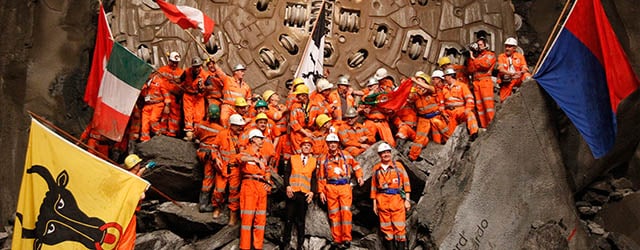After 17 years of construction, the Gotthard Base Tunnel, connecting Northern and Southern Europe through the Alps, opened to great fanfare on June 1.

Measuring 57 kilometers (35 miles) and costing $12 billion dollars, the Gotthard Base Tunnel is the world’s longest and deepest traffic tunnel.
Remarkably, it opened on time. What’s more, the Swiss completed this major infrastructure project while other nations failed to upgrade or maintain their often-antiquated rail networks, let alone embark on infrastructure megaprojects.
The Swiss people backed plans for the Gotthard Base Tunnel and three other major rail projects by establishing a fund for the financing of public transport projects (FinPTO, since replaced by the Rail Infrastructure Fund). It is financed largely by a heavy goods vehicle charge (60%) and a value-added tax.
A June report by the McKinsey Global Institute noted a pattern of underinvestment around the world has allowed many systems to deteriorate. “Advanced and developing economies alike are wrestling with the question of how to pay for urgently needed projects as governments cut back spending,” says Jacques Bughin, director of MGI in Brussels.
Nestled in Europe’s busiest north-south freight corridor, Switzerland will derive enormous benefits from the tunnel—from more trade to less pollution of its pristine Alpine air.
The termini of the tunnel are on either side of the Alps in Europe’s most densely populated belt, known as the “blue banana,” which runs from northern England south through the Netherlands, France, Germany and Switzerland into Italy.
Quicker links to Genoa (Italy’s busiest port) and Rotterdam (Europe’s busiest port) will transport cargo faster and more competitively than before, and passengers will be able to shave an hour off the journey between Zurich and Milan.



